#beetles of North America
Text
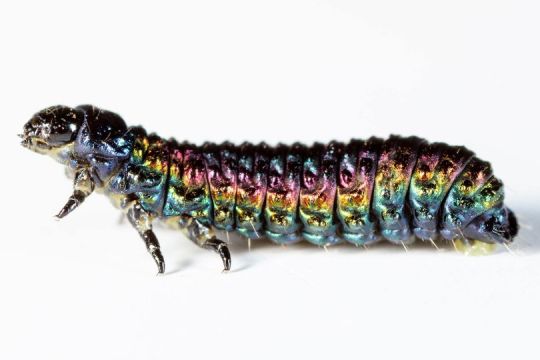
Groundselbush Beetle (Trirhabda bacharidis), larva, family Chrysomelidae, Jacksonville, Florida, USA
photograph by Efram Goldberg
7K notes
·
View notes
Text
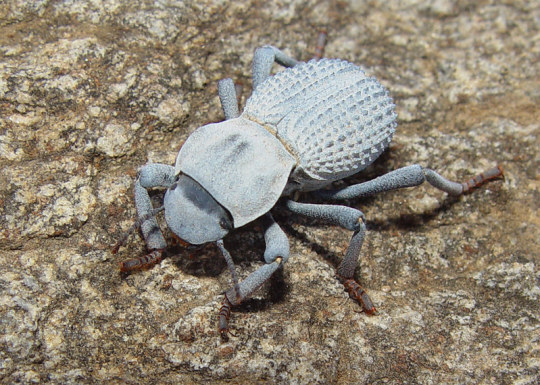
A blue death-feigning beetle, or desert ironclad beetle (Asbolus verrucosus) in California, USA
by Robyn Waayers
#i have 3 of these#they're the best#desert ironclad beetle#blue death feigning beetle#beetles#asbolus verrucosus#asbolus#Tenebrionidae#coleoptera#insecta#arthropoda#wildlife: california#wildlife: usa#wildlife: north america
323 notes
·
View notes
Text
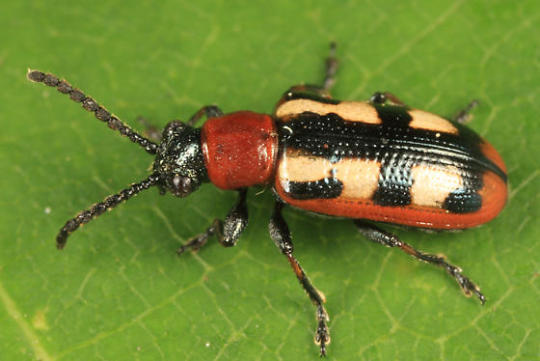


Spare a Moment for the Asparagus Beetle
Crioceris asparagi, more often known as the common asparagus beetle, is a species native to Europe and Asia; is has also been introduced to North America. As the name implies, it is almost exclusively found on asparagus plants, making it a common sight in agricultural fields and grasslands with wild asparagus.
The common asparagus beetle is easy to spot, due to its distinctive markings. Both males and females are black, with a red thorax and a red ring around their wing casings (elytra). Each individual also has three large, white or cream spots on each of their elytra. But for all their flashy markings, C. asparagi are quite small, reaching only 7 mm (0.28 in) in length.
The bright markings of the asparagus beetle are thought to mimic those of another type of stinging beetle, as a way to deter predators. However, this defense is not very effective, as C. asparagi are a popular food for birds including ducks and chickens, as well as larger beetles and wasps. If its bright coloration fails to ward off threats, the beetle will flee to another plant or play dead. For its part, the asparagus beetle only feeds on one thing: asparagus.
Breeding for C. asparagi occurs in April or May and lasts throughout the spring. Males court females by riding on their abdomens and guarding them from other males; females in turn will often attempt to avoid male attention by moving away or kicking them. A female will often mate with several males, and only retains the sperm of the male she prefers. Following copulation, she lays 4-8 eggs on the underside of an asparagus leaf. The eggs can take anywhere from three to twelve days to hatch, and the larvae immediately begin feeding on their host plant. After several weeks, during which time the larvae go through for molting periods or instars, they pupate and emerge as adults. Several generations can occur in a single season. When the weather grows colder, the asparagus beetle burrows into the soil or leaf litter to hibernate through the winter. Most adults only live about a year or so.
Conservation status: The common asparagus beetle has a large, robust population and has not been evaluated by the IUCN. In both its native and introduced range, it is often considered a pest for asparagus farmers.
If you send me proof that you’ve made a donation to UNRWA or another organization benefiting Palestinians– including esim donations– I’ll make art of any animal of your choosing.
Photos
Tom Murray
David Gould
Phil Myers
#common asparagus beetle#Coleoptera#Chrysomelidae#leaf beetles#beetles#insects#arthropods#urban fauna#urban arthropods#grasslands#grassland arthropods#europe#asia#north america#animal facts#biology#zoology#ecology
96 notes
·
View notes
Text
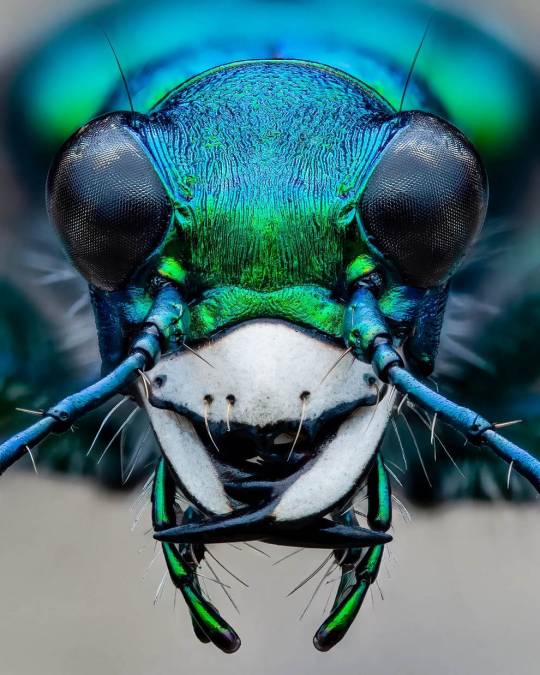
A spotted tiger beetle (Cicindela sexguttata). These metallic green beetles are native to North America and adults are efficient predators with large mandibles.
Photograph: Benjamin Salb/Royal Entomological Society
Insect Week Photography Awards
#benjamin salb#photographer#royal entomological society#insect week photography awards#spotted tiger beetle#beetle#insect#cicindela sexguttata#metallic green#north america#macro photography#nature
104 notes
·
View notes
Text
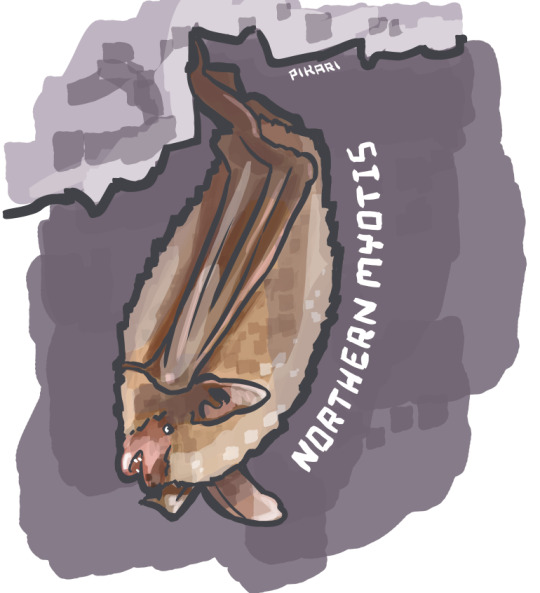
Northern Myotis (Myotis septentrionalis) AKA Northern Long-Eared Bat
East & Midwest USA and Canada
Status: Near Threatened
Threats: Disease, Pesticides, Human disturbance
#blood-sucking? only if you're a beetle :3#bat art#bats#artists on tumblr#animal art#digital art#daily art challenge#daily animal#mammal#bat#usa#canada#north america
23 notes
·
View notes
Text
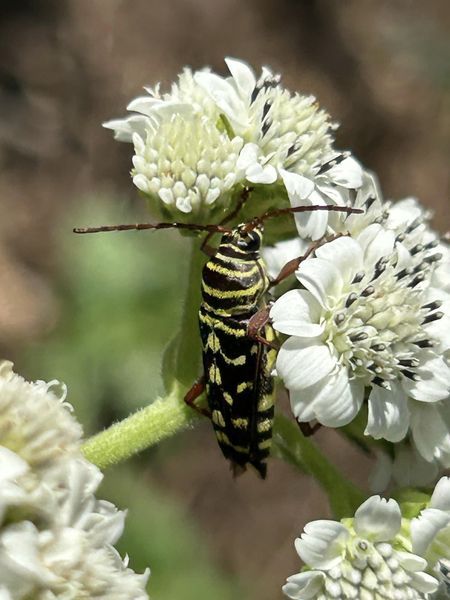

Mesquite Borer (Placosternus difficilis), family Cerambycidae, National Butterfly Center, Mission, TX, Hidalgo county, USA, 10/29/23
photograph by Paxon Kale CC
10 notes
·
View notes
Text
so jelly of people who live in parts of the us where u can just find hercules beetles
#if u are in arizona or some parts of the east you can find western n eastern hercules beetles#edit western hercules beetle are in parts of new mexico and north mexico as well#also in south america obv#once i have my license maybe ill go to arizona to look for them. its like right there ig#everytime i see them on reddit w someone who has no clue what they are im like agh
6 notes
·
View notes
Text
north american ladybugs > asian lady beetles
6 notes
·
View notes
Text

Coccinnella septempunctata
#bugs tw#lady beetles#invasive to north america#not to be confused with the native nine spotted lady beetle
1 note
·
View note
Text
i was looking up beetles and ive realized that there just arent huge fucking beetles around here. which is weird bcus i found a huge fucking beetle a year or 2 ago and now i dont know where it came from
#my post#scrolling through pages and pages of big beetle wikis and theres just not many in north america that i can find????#and the ones that *are* here grow to like 1 in max?????#but the one i found was definitely at least 2 inches long#hellow what the fuck was that was that someones escaped pet#it was one of the ones that has like the big pincers or horns or something#so i have no idea. i never saw it again so maybe it was a runaway
0 notes
Text

Jewel Weevils (Eurhinus magnificus), family Eurhynchidae, Indian River County, FL, USA
photograph by Gerry Wegner
1K notes
·
View notes
Text
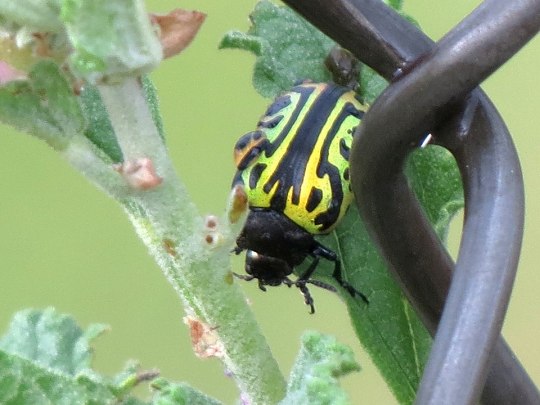
A globemallow leaf beetle (Calligrapha serpentina) in North America
by Luis Alvaz
#globemallow leaf beetle#beetles#calligrapha serpentina#calligrapha#Chrysomelidae#coleoptera#insecta#arthropoda#wildlife: north america
149 notes
·
View notes
Text
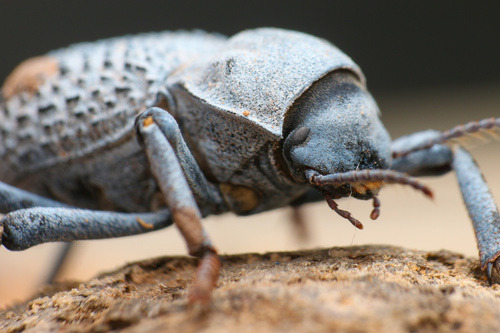
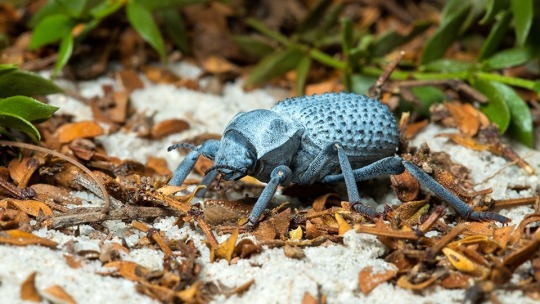
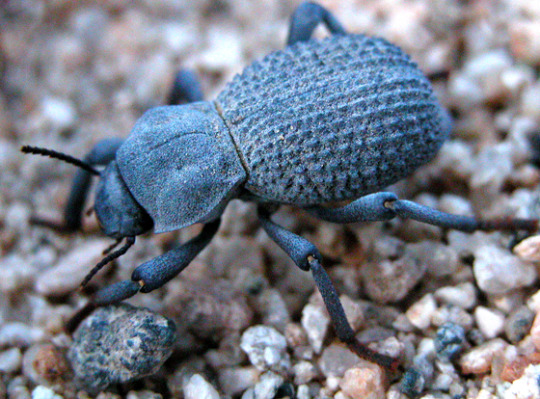
RIP: The Blue Death-Feigning Beetle
Also known as the desert ironclad beetle, the blue death-feigning beetle (Asbolus verrucosus) is a species of darkling beetle native to the Mojave and Sonoran deserts of the southwestern United States and Northern Mexico. Within this environment, the desert ironclad beetle can often be found near vegetation like sagebrush or palo verde trees, or hiding under fallen logs or rocks. However, it's not uncommon to spot it trundling along out in the open.
While the blue death-feigning beetle's coloring might make it stand out against the dull desert background, it actually serves a useful purpose. The color is a result of a heavy coating of wax that covers the beetle's body; this wax helps reduce evaporation and preserves precious moisture. It also helps that A. verrucosus is a small species, no more than 8–21 mm (0.71–0.83 in), and as they are most active at dawn and dusk they are easy to overlook. Males and females are virtually identical; the most reliable way to tell the difference is by the antennae, as males have long bristles on the underside while females don't.
Despite their small size-- or perhaps because of it-- desert ironclad beetles are a popular snack for many other desert dwellers, including lizards, snakes, birds, small rodents, and foxes. When threatened, blue death-feinging beetles live up to their name: they drop to the ground, roll onto their backs and play dead. This state can last anywhere from a few seconds to 45 minutes. Once the predator is gone, they are able to use their long legs to easily right themselves and continue with their business. Like most other darkling beetles, this species is an omnivorous scavenger, feeding on dead insects, fruits, lichen, and other plant matter.
The desert ironclad beetle can mate year round, given optimal conditions such as good rainfall and plenty to eat, but they're most active during the summer months. Once a male encounters a female, he courts her by 'tickling' her back with his antennae. If she is receptive, the two mate and then part ways. The female digs a burrow and lays a clutch of eggs in moist soil, where they take 2-3 weeks to hatch. Once larvae emerge, they immedietly begin to seek out organic matter to feed on. Over the next several weeks, they can grow from 2-3 mm (0.07-0.11 in) to 50 mm (2 in)! When they get big enough the larvae burrow into rotting wood and pupate for about a month before emerging as adults. Individuals can go on to live for up to 10 years in the wild.
Conservation status: The IUCN has not evaluated the blue death-feigning beetle, but it's believed that populations are currently stable. The species' primary threat is collection for the pet trade.
If you like what I do, consider leaving a tip or buying me a ko-fi!
Photos
Mason S. via iNaturalist
Bruce D. Taubert
Hartmut Wisch
#blue death-feigning beetle#desert ironclad beetle#Coleoptera#Tenebrionidae#darkling beetles#beetles#insects#arthropods#desert arthropods#north america#southern north america#central america#animal facts#biology#zoology
145 notes
·
View notes
Text
Photinus fireflies are probably one of North America’s most iconic and beloved beetles, and rightfully so. P. pyralis is big and bright, with a yellow-green color to its bioluminescence

I also often see these smaller Photinus with a warm orange glow. I think they could be P. scintillans, which aligns with their size, flash pattern, the yellow sclerites on males, and where I’m located. females of that species are short-winged and flightless, so I’ll try to find one to figure out the ID for sure.
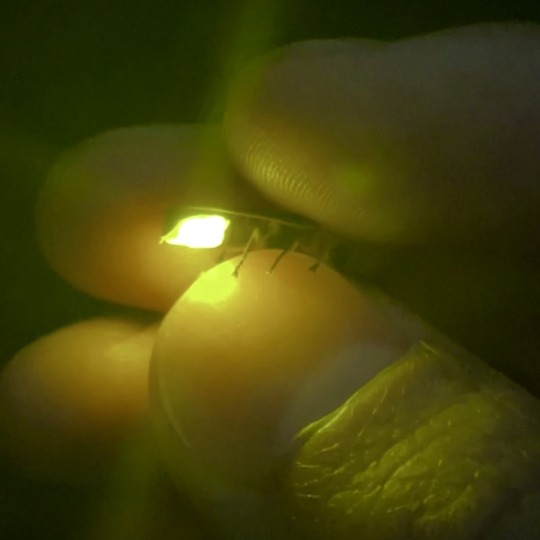

reminder that fireflies eat slugs and snails as larvae! if you like seeing them in your garden, stop trying to exterminate land gastropods and leave some vegetation where the adults can sleep during the day. slugs and “weeds” = more magic glowing bugs
10K notes
·
View notes
Text

Fish! Nom nom, I love to eat little fish! If I were big enough, I would eat you!
Bert's Predaceous Diving Beetle (Sanfilippodytes bertae)
Alberta, Canada
Status: Endangered
Threats: small isolated population, cattle grazing, water management
8 notes
·
View notes
Photo

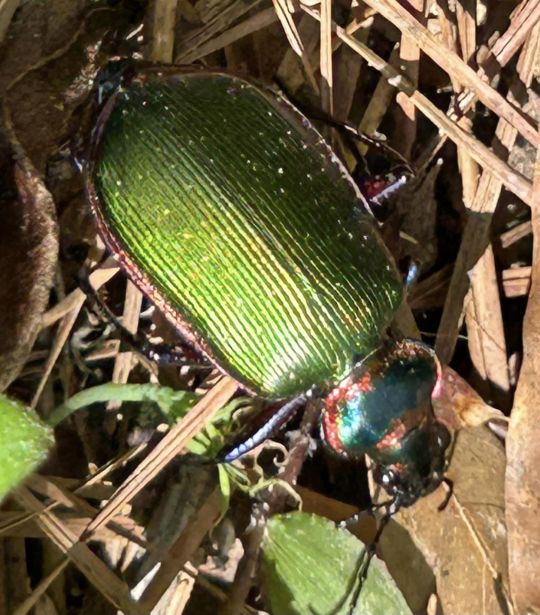


Fiery Searcher, Calosoma scrutator, ~3.5 cm long, family Carabidae, Brock Park, Houston, TX, Harris county, 4/3/23
I was so excited. This is a beetle I’ve been looking for ages, and I finally found one.
photographs by Paxon Kale CC
27 notes
·
View notes